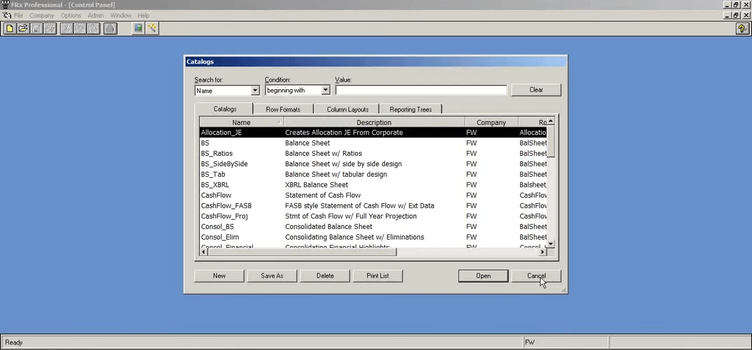Microsoft FRX: Everything you need to know
Microsoft FRx was a financial reporting and analysis software designed to help organizations streamline their financial close processes and improve decision-making through enhanced reporting capabilities.
It allowed users to create and generate financial statements and reports by pulling data directly from their accounting system’s general ledger.
The history and evolution of FRx:
- FRx was originally developed by a company called FRx Software Corporation, founded in the 1980s.
- In March 2000, FRx Software was acquired by Great Plains Software, which was later acquired by Microsoft in 2001. FRx then became a part of the Microsoft Business Solutions division.
- After the acquisition, Microsoft continued developing and selling FRx as a financial reporting tool, often bundled with its Dynamics ERP products like GP, NAV, SL and AX.
- In the early 2000s, FRx was one of the leading financial reporting solutions for mid-market companies, with over 100,000 customer sites worldwide. It is integrated with over 50 accounting systems.
- In 2011, Microsoft announced it would discontinue FRx in favor of a new reporting application called Management Reporter as the successor product.
- While still supported for older Dynamics versions, FRx was effectively retired by 2014 as Microsoft pushed customers to transition to Management Reporter.
- Some key FRx product names included FRx Financial Reporter, FRx Forecaster (for budgeting) and FRx Report Manager.
Little Known Facts about Microsoft FRX
- Integration with Financial Systems: Microsoft FRx could integrate with over 50 financial accounting systems, pulling financial information directly from the General Ledger to ensure up-to-date and accurate financial reporting.
- Real-Time Data Access: Employees could access real-time data and build, format, and distribute reports with minimal IT involvement, enhancing productivity and effectiveness.
- Reporting Features
- Report Generation: FRx allowed for the creation of accurate, comprehensive, and timely financial reports. It supported various Microsoft Dynamics ERP systems, including GP, SL, NAV, and AX.
- Output Options: Reports could be output in multiple formats, including Microsoft Office Excel, ASCII, FRx DrillDown Viewer, OLAP, and XBRL.
- Customizable Templates: The software included design wizards and customizable report templates, making it easier for users to create relevant financial reports quickly.
- User-Friendly Design
- Ease of Use: FRx was known for its user-friendly design, which included wizards and customizable templates, making it accessible to users with varying levels of financial knowledge.
- Flexible Report Design: The software allowed for flexible report design, enabling recipients to view information in an easy-to-understand format.
- Additional Capabilities
- Error Reduction: By pulling information directly from the general ledger, FRx reduced error-prone double entry.
- Customized Delivery Methods: Reports could be posted to a website with report-level permissions, allowing onsite and offsite users to access them easily without a connection to the general ledger

FRX: What comes next?
FRx was a pioneering financial reporting tool that Microsoft acquired and continued developing for about a decade before replacing it with the newer Management Reporter application as part of the MS Dynamics ERP suite.
With its discontinuation, organizations were encouraged to transition to newer, supported solutions like Microsoft Management Reporter or other advanced financial reporting tools to ensure continued efficiency and compliance in their financial reporting processes.
Opening the Floodgates
From the ashes of Microsoft FRX came forth a slew of financial reporting software, each vying for dominance in the market. Oracle NetSuite Financial Reporting and SAP S/4HANA Financial Reporting offered robust solutions for large enterprises, while FloQast, Sage 300 Financial Reporter/ Sage Intacct and Sage General Ledger catered to mid-sized businesses. For those seeking industry-specific solutions, Epicor Kinetic–Financials emerged as a strong contender. Acumatica Reporting provided a flexible option for growing companies, while Workiva offered a cloud-based platform for consolidated reporting. Other multi-company, multi-national businesses found robust and complete cloud solutions in SAP Business One (B1) and Mondial Software. This diverse landscape of financial reporting software ensured that businesses of all sizes and industries could find a solution to meet their specific needs.
Your next steps...
💡Click here to reduce time spent on period-end reporting
🔋Click here if you wish to solve 25+ Spreadsheet reporting issues
🔆 Click here to improve the accuracy and usability of generated reports
💯 Click here to decrease risk by providing on-demand access to the transaction detail behind every reported balance
☎️ Book a free, no-obligation walkthrough with Mondial to see how we can help you in financial reporting and consolidations just like one of our successful clients.






